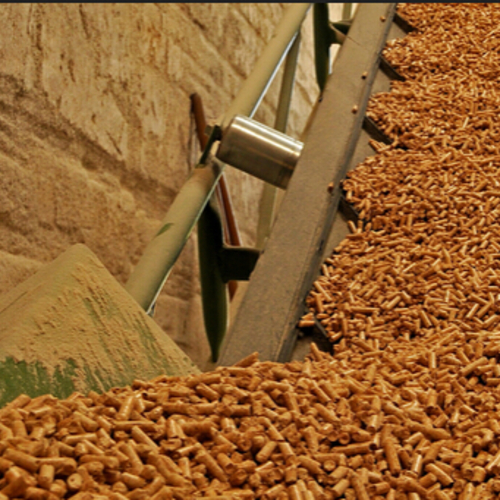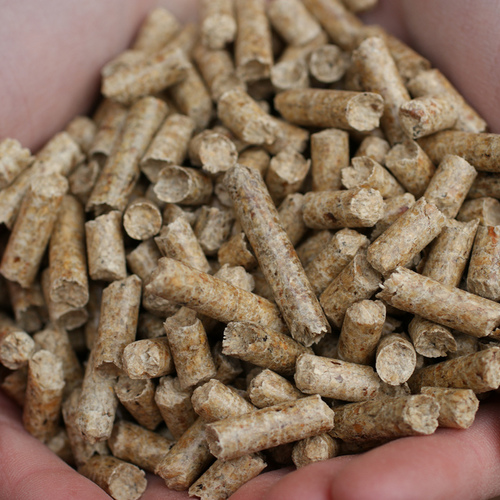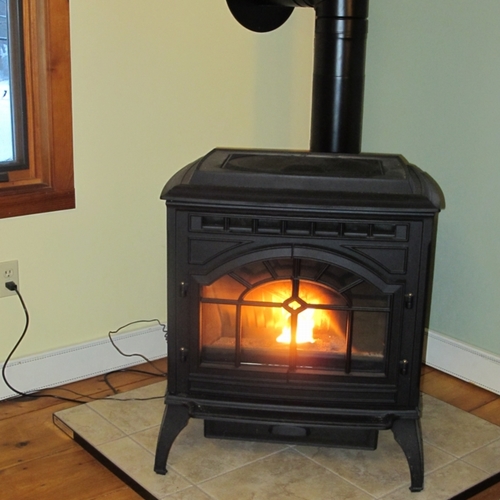
Image Credit: Rusty Clark / Flickr
Researchers have concluded that homeowners who store wood pellets inside their homes are not risking unhealthy levels of carbon monoxide.
Summing up the findings of the University of New Hampshire study, Biomass magazine said that the issue had cropped up in the Northeast where a growing number of homeowners use the compressed wood pellets to heat their homes.
“There has been some controversy there about whether it is okay to store pellets inside, or if it should be done in outdoor silos,” Adam Sherman, executive director of the Biomass Energy Resource Center in Burlington, Vermont, said. “It is a bit of a tricky issue, and this study could really help put this debate to rest.”
Over a period of seven months, carbon monoxide (CO) concentrations were monitored in 25 houses in New Hampshire and Massachusetts. Sixteen of the homes had wood-pellet boilers and stored pellets inside in containers holding at least three tons of the fuel. Four of the houses had outdoor pellet storage, and another four used other fuel for heating. (The 25th site was a university laboratory.) Houses represented a range of styles and ages, dating anywhere from 1774 to 2013.
Researchers were looking for CO concentrations of 9 parts per million (ppm) or more, the maximum indoor concentration recommended by ASHRAE, but instead found “no significant emissions.”
“These results suggest that there should be no hindrance to the installation of wood pellet heating systems with indoor storage units in residences,” the April 2015 final report said.
One of the study’s authors, Barbara Bernstein of the N.H. Public Utilities Commission, said that wood pellet systems have been studied in Europe where they have been used for some time. “It didn’t seem there would be much difference between what you would find in Europe and find here,” she told the magazine.
Concerns from New York State agency
The New York State Energy Research and Development Authority (NYSERDA) had been considering the merits of promoting residential biomass heating systems in the state, particularly wood pellet systems, the authors of the study said. But they were troubled by earlier reports of CO poisoning in industrial settings where wood pellets were produced, stored, and shipped.
New Hampshire and Massachusetts already had rebate programs for pellet boilers, or were expected to implement them. Automatic pellet systems in New Hampshire often include gas-permeable storage containers. Yet no one knew whether the bulk storage of pellets in the basement of a house would lead to elevated levels of CO.
“Since this is the first study of its kind and funds were limited, we opted to perform a preliminary assessment using off-the-shelf inexpensive CO and temperature (T) data loggers in order to obtain data from many homes, rather than using state-of-the-science technology in one or two homes,” the report says.
Data was collected between December and June of 2014 so both the heating season and non-heating season were represented. The limit was set at a conservative 9 ppm (household CO alarms are typically set to go off at concentrations of 70 ppm or more).
“The goal of this study was to provide data to address the question of whether stored wood pellets are in fact out-gassing CO in homes where they are stored such that indoor air quality is adversely affected. From the data set obtained, the answer is not much, if at all,” the study says.
Results are based, however, on readings of the 9 ppm threshold. If air quality standards were to change — to parts per billion rather than million, for example — more testing would be needed. Also, Biomass magazine said, the study has yet to be peer-reviewed.
More study would be a good idea
Fatalities have occurred due to exposure to CO generated by wood pellets, including shipyard workers entering cargo holds where pellets were stored and building residents entering sealed pellet storage areas in Europe.
“This isn’t an issue to be taken lightly,” Sherman said by telephone. “No one should be dismissive.”
He said installers of pellet boilers have been including passive ventilation devices in the fill tubes for bulk deliveries, and that’s probably a good practice to continue even with the University of New Hampshire findings. The study sample was small, and there are a number of unknown details of pellet storage that could affect CO emissions, including the age of the pellets and the volume of the storage container. More data would be better, he said.
Sherman added that NYSERDA, which contributed to the UNH study, is apparently prepared to underwrite additional research.
Weekly Newsletter
Get building science and energy efficiency advice, plus special offers, in your inbox.














0 Comments
Log in or create an account to post a comment.
Sign up Log in